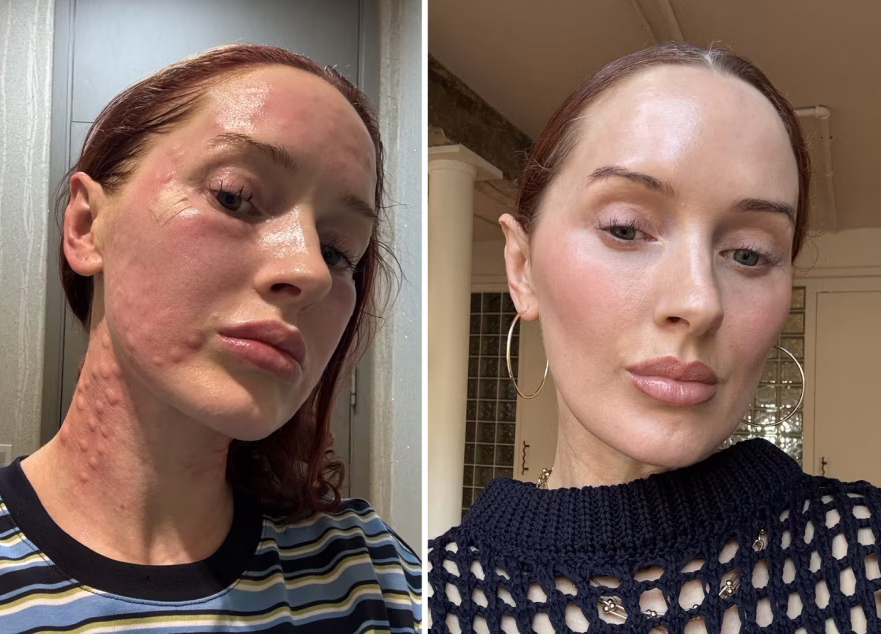Britney Yip, a 25-year-old marketing professional in New York, wanted the smooth, youthful skin she saw on social media, where many touted a procedure called Rejuran. But Yip discovered the anti-aging injections weren't available in the US. So she flew to Seoul, South Korea.
There, she endured around 100 injections and a week later, began to see the results. "When I came back, my friends were like, ‘Oh my god, your skin looks amazing’," Yip said.
Rejuran injections are not yet FDA-approved in the US. However, that didn’t stop Yip from traveling abroad for the treatment, which costs 450 USD per session. The manufacturer recommends three sessions for results lasting up to a year.
Unlike popular injectables like Botox or fillers, Rejuran is touted to both hydrate and improve skin elasticity. Rejuran is made with polynucleotide (PN), a chain of molecules containing DNA extracted from salmon cells, said to promote healing and regeneration. Developed in South Korea in 2014, the injectable form is now approved in 20 other countries.
According to Forbes, Rejuran’s success propelled Jung Sang-soo, founder and chairman of parent company PharmaResearch, to billionaire status this year.
Some American doctors remain skeptical. "If it really works, it’s fantastic because everyone is looking for a booster to help overall improve their skin. But anecdotal evidence is not scientific data, and the data we have is still very early," said Catherine Chang, a cosmetic surgeon in Beverly Hills. She has also heard mixed reviews, with some seeing dramatic improvements in skin texture, while others see no results and point to potential side effects including irritation, rashes, or discoloration.
PharmaResearch stated it has observed only minor skin reactions and no serious side effects since Rejuran's launch. The company also said it has applied for FDA approval for the injections.
Michelle Lee, a former Allure editor who combined Rejuran with other laser treatments in South Korea, said that within 10 days, her skin looked incredible, plump, and nearly poreless. However, she admitted uncertainty about which procedure caused the improvement, as treatments are often combined.
 |
New York facialist Sofie Pavitt's face during the Rejuran injections in Seoul (left) and six weeks later. *Photo: Sofie Pavitt* |
Lee said the experience is not for the faint of heart. She has given birth three times, torn her ACL, and used a microneedling pen. "I pride myself on having a pretty high pain tolerance, but this was intense," she said, noting clinics often provide topical numbing cream or administer anesthesia during treatment.
Sofie Pavitt, a New York facialist, also tried Rejuran in Seoul and agreed about the pain. "I stopped counting after 80 injections," Pavitt said. "It’s not unbearable pain, but it feels like a thousand tiny paper cuts. When you walk out, you look really freaky, like an Avatar character."
Unlike Botox or fillers, injected in small doses deep into the skin, Rejuran requires hundreds of shallow injections "using a serial micro-injection technique.
"On average, a treatment session will have about 100 to 150 injection points," said Chris Lee, head of global healthcare at PharmaResearch.
Immediately after the injections, the skin is covered with red bumps resembling a rash, which can take from 24 hours to several days to disappear.
South Korea has long been a mecca for skincare enthusiasts, and part of Rejuran’s success stems from the growing interest in K-beauty (Korean beauty products and routines).
"In general, the Asian skincare industry tends to be way ahead of the US," Dr. Chang said. "K-beauty, in particular, has gotten a lot more attention now thanks to the popularity of K-pop, K-dramas, and social media."
In the US, Rejuran is only legally available as a serum or cream, often part of a "salmon facial." This treatment, praised by celebrities like Jennifer Aniston and Kim Kardashian, involves microneedling or resurfacing lasers followed by topical application of Rejuran.
Binh Minh (*From the Wall Street Journal*)












